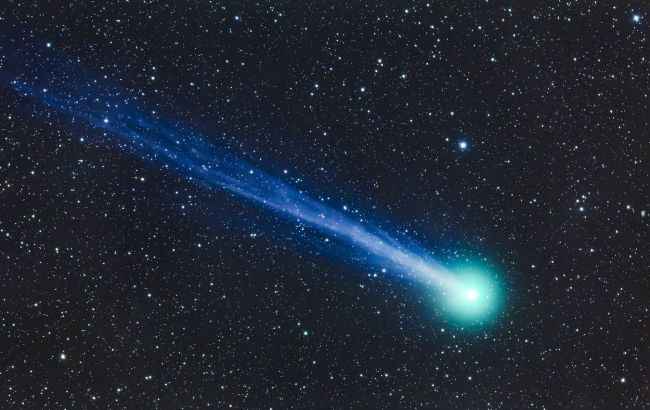Brightest comet in 1,350 years will fly past Earth: When and where to see it
 The brightest comet of the year is approaching Earth (photo: Getty Images)
The brightest comet of the year is approaching Earth (photo: Getty Images)
Astronomers report that on October 21, comet C/2025 A6 (Lemmon) will make its closest approach to Earth. Its brightness is increasing so rapidly that it is expected to become one of the most visible comets of 2025. Here's what this comet is, when and how it can be seen, and what makes it special.
When and where to look for comet Lemmon
Comet C/2025 A6 was discovered in January of this year, and it has already brightened to a magnitude of 5.7, which is almost at the limit of naked-eye visibility (around 6.0). Under a dark, clear sky far from city lights, it may be possible to spot the comet without optical aid.
On October 21, it will pass approximately 90 million km from Earth, which is considered a very close approach by astronomical standards.
How to locate it in the sky:
- October 21. On the day of closest approach, the comet can be seen low above the northwestern horizon after sunset, in the constellation Boötes.
- October 26-27. The celestial body will move into the constellation Serpens.
Although it will be difficult to see with the naked eye, experts recommend preparing binoculars or a small telescope to catch this rare celestial event, which occurs once every more than thousand years.
Why the comet shines so brightly
Like most comets, C/2025 A6 Lemmon brightens as it nears the Sun. Solar heat causes the ice on its surface to evaporate, forming a massive gaseous envelope (coma) and a long tail.
This process makes the comet visible from Earth because the larger the coma, the more light it reflects.
According to astronomers, this is the first time in 1,350 years that the comet will pass so close to our planet. The next similar close approach is expected only in a few centuries.
Earlier, we wrote about an alien spacecraft heading toward Earth, and what scientists said.
Sources: NASA Jet Propulsion Laboratory (JPL), Sky & Telescope, TheSkyLive.com, PlanetaNovosti.com

